Alpine SnowGuard’s research continues with roof snow management details we observed at our in-house performance testing facility: “buckling”. Some roofing materials, especially those that incorporate Polyolefins in their formulation, tend to shed snow and ice quickly as demonstrated in the below video clip and in our previous blog.
Buckles: (intransitive verb) to bend or move usually under the influence of some external agency
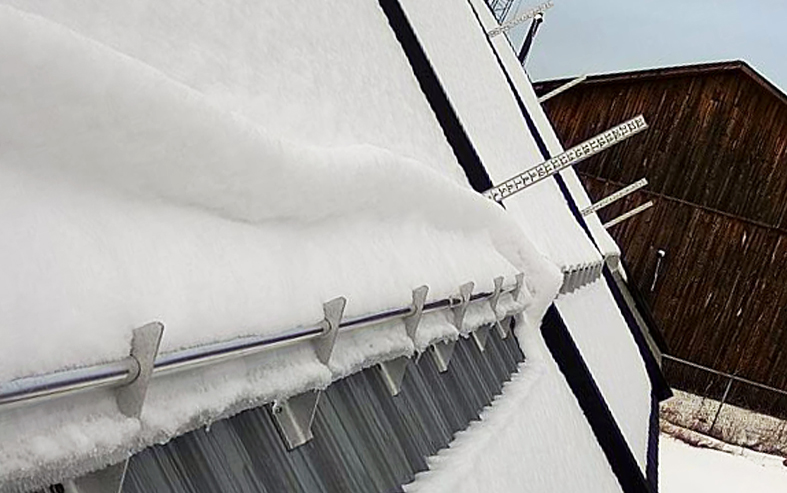
The Snow Buckle Phenomenon
You’ll notice that the snow mass above the snow fence appears to be an even blanket of fresh snow. On traditional roofing materials like slate, tile, composition shingles, cedar and metal, snow builds up behind the snow guard rails and either melts or slumps against the guards. However, if conditions are just right, hydraulic pressure from the melting snow mass can force the mass to “buckle” and actually lift up from the roof surface. Given the right conditions (temperature, snow density, roof pitch, roof type, etc.), these snow buckles will sometimes crest and roll over the top of any given snow management system. I’ve often used the analogy of a wave action cresting a coral reef to describe this phenomenon. It’s important to understand this phenomenon.

Take a look at this clip of the 7/12 pitch side of our building. Our Alpine SnowPads were installed on the synthetic slate, and as you can see, the sheet of ice and snow released below the SnowPads before it had a chance to melt off, as it did on the composition shingle and corrugated metal roof sections.
So, how can we handle buckling? Alpine has often recommended supplemental tiers of guards to reduce the mass that pushes against the snow guard rails. On many commercial projects this is accomplished by installing an additional tier (or sometimes multiple tiers) of snow guards. On residential projects, it’s already difficult to get homeowners to install a single tier of pipe-style guards, much less, two!
Supplemental Tiers of Snow Guards Recommended
In these situations, Alpine advocates for supplemental tiers of pad-style snow guards to help keep some of the snow upslope from slumping against the guards. This can be likened to the breakwaters put in place along many beaches. Essentially, the hydraulic forces that act on a beach are reduced by adding obstructions in multiple rows. Makes sense.
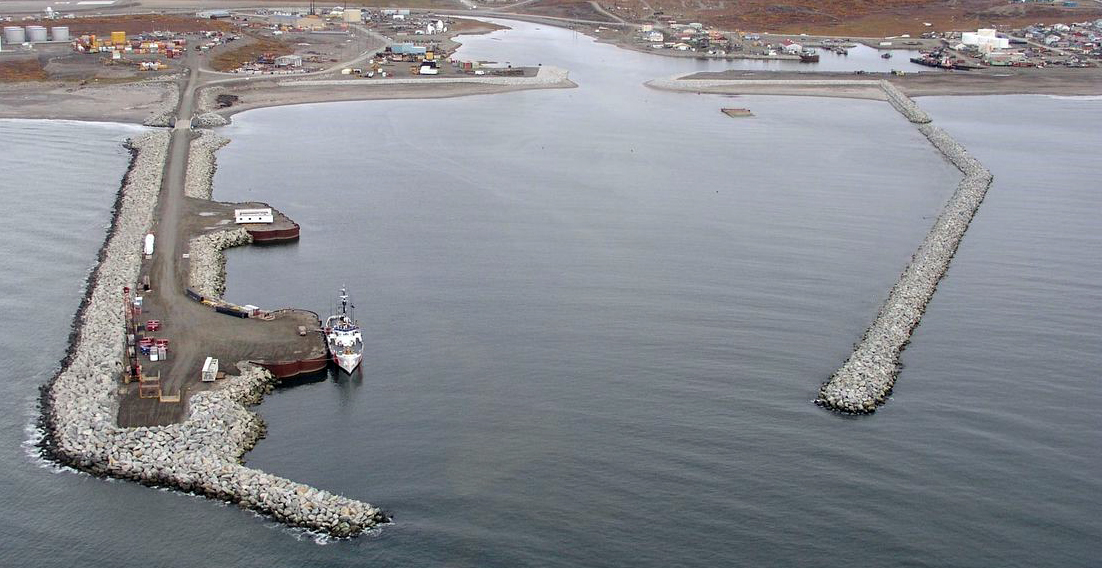
Both of the snow guard approaches above work well. The consumer, architect, engineer, etc., needs to understand that the above approaches work well given normal conditions. However, during extreme weather conditions, like a hurricane, the effectiveness of a breakwater is significantly reduced. The same can be said of snow guard function in extreme conditions.
Late Storms Compound Issues with Snow Management
It seems like every year for the past several years, the central and eastern US have experienced multiple late season, April-May snow storms that have dumped large amounts of wet, heavy snow. In several cases, these late storms came back-to-back adding more snow to an already existing snow mass. In these situations, the effectiveness of snow management devices is often reduced.
This should be anticipated and expected.
The fix? Add more snow guards or clear the snow off the roof between major events. This is a common practice in heavy snow load regions and should be considered in areas that are experiencing unusual snowfall events.
Cornices: (noun) an overhanging mass of hardened snow at the edge of a precipice
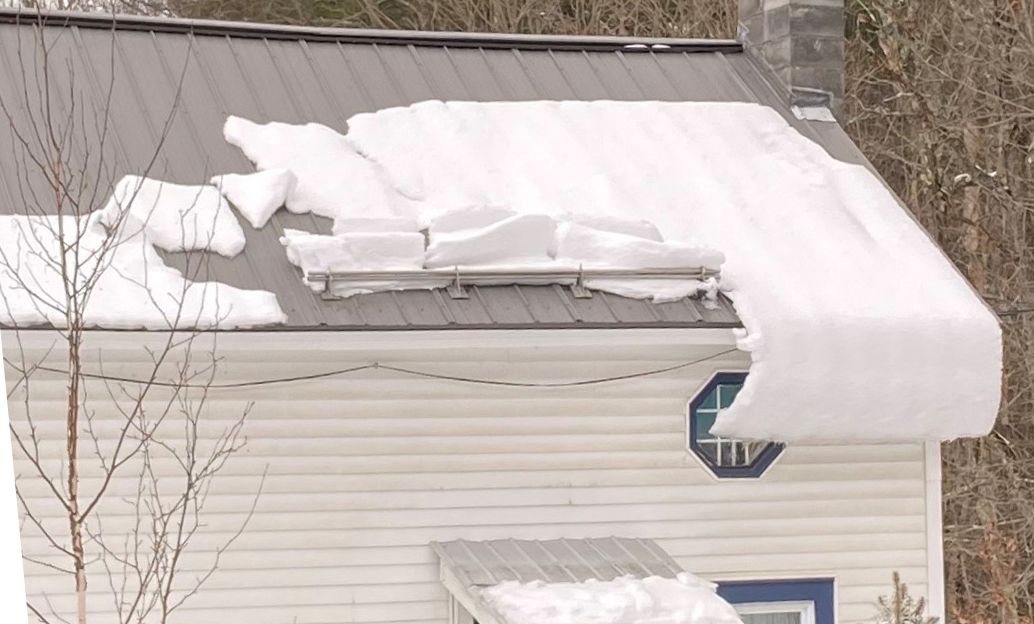
Freezing Meltwater
Another phenomenon we’re tracking is that of cornices. As you can see in the picture above, the Alpine SnowGuards two-pipe system is retaining the snow above a doorway. The snow to the left of the snow guard has slid off. The snow to the right of the snow guards is slowly creeping off and creating a cornice of snow and ice. The ice in the lower compacted layer is holding the snow mass together. What’s causing this ice layer? The melt water that is freezing at the roof level is coming from solar thermal heat / melt and temperature variations that have edged slightly above freezing for brief periods during the day.
At this stage of our study, the testing facility is a non-heated space (we intend to add heat once we’ve collected enough data from our theoretically well-insulated structure).
Interestingly, neither buckling or cornice development has occurred on the 7/12 pitch side of the roof. The lower roof pitch is much more manageable from a snow management perspective.
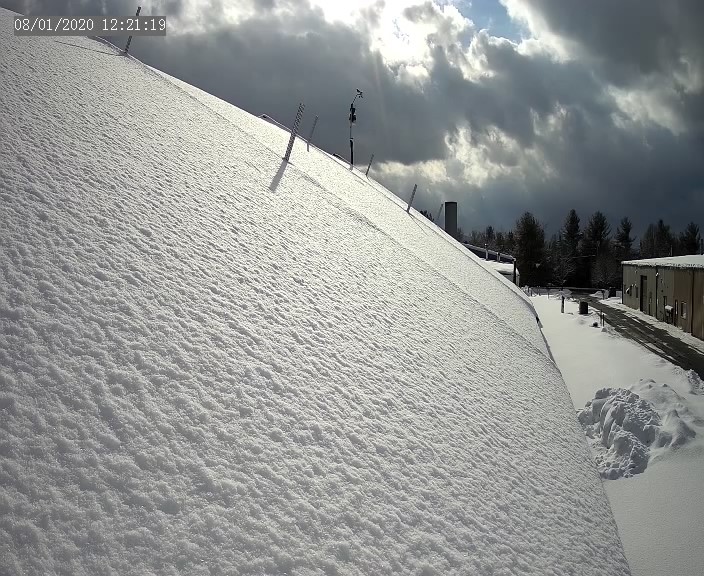
To be clear, this all changes with heat loss through the roof. On the factory roof adjacent to this structure, which is a 3/12 pitch, snow and ice actually migrates slowly (maybe an 1/8” or so a day depending on conditions) off the roof.
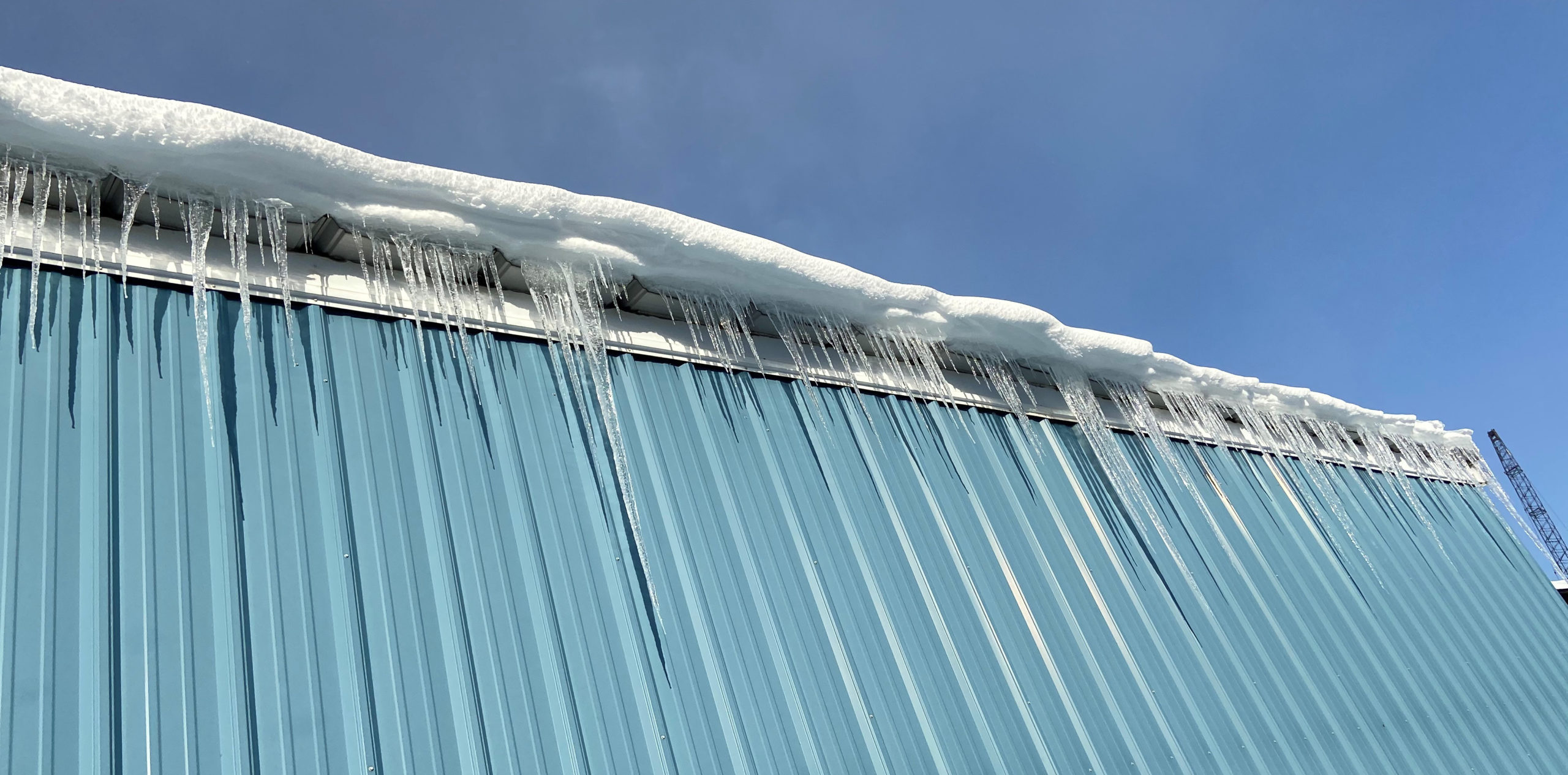
Safely Remove Ice-Laden Overhanging Masses
In some cases, this acts almost like a glacier, migrating through and around snow management devices. If this is happening on your project, be sure to remove the overhanging mass. This is typically an ice-laden mass – very heavy and very dangerous.
Stay tuned. Snow accumulation is just beginning in Morrisville, Vermont.
And Alpine SnowGuards is just getting started.
Until next time,
Brian Stearns
President & Founder, Alpine SnowGuards
We keep snow in its place
888.766.4273
Sign up to start using our Online Project Calculator for an immediate layout and project pricing!
Subscribe to our monthly newsletter and keep up on the latest industry and Alpine news, products, and upcoming events!
Alpine SnowGuards designs, engineers, and manufactures snow management systems from our facility in Morrisville, VT. We work closely with leading roofing contractors, engineering firms, developers, solar installers and roofing manufacturers to ensure we deliver quality products that do what we say they’ll do. Alpine SnowGuards can help a building qualify for LEED® credits.
(Images from: Dave DiCello, Army Corps of Engineers and Alpine SnowGuards)
